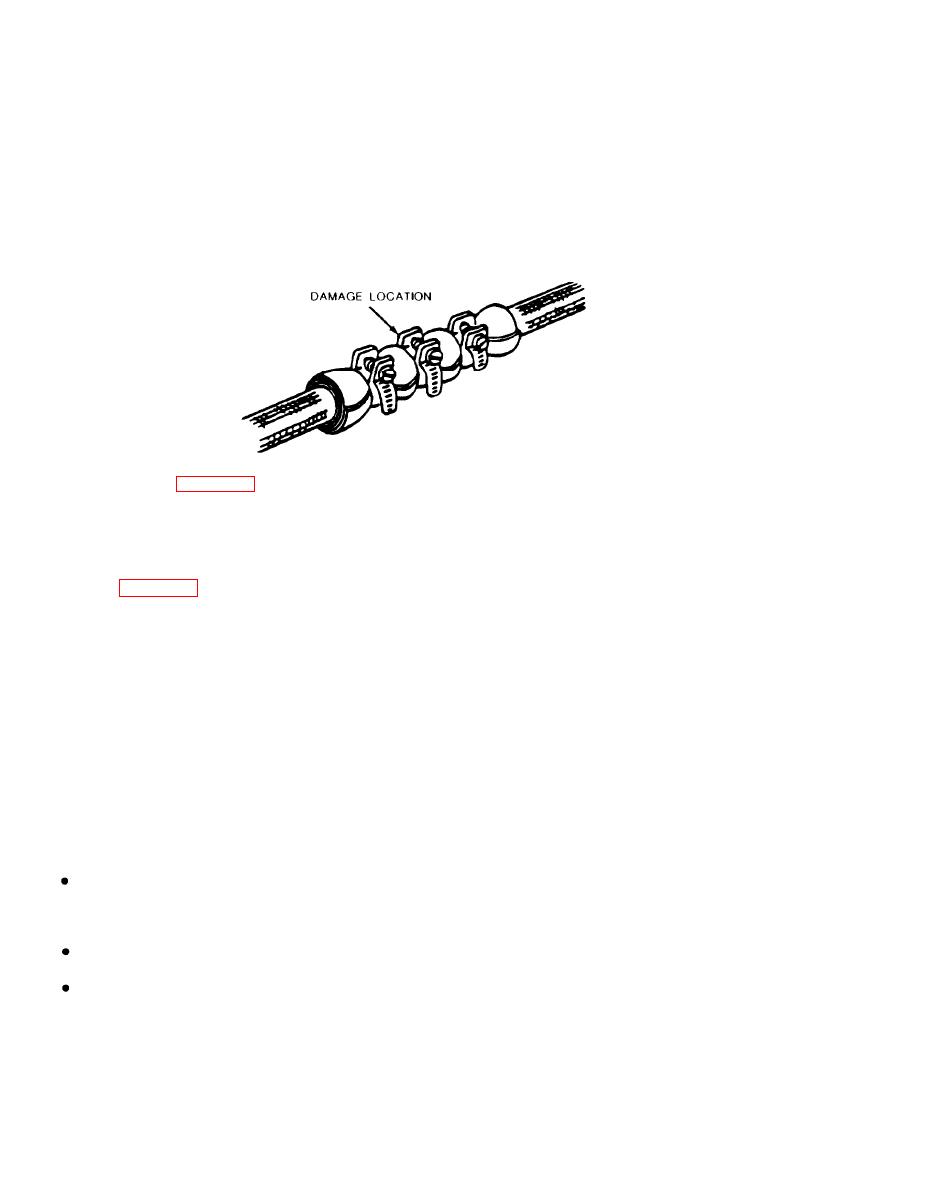 |
|||
|
|
|||
|
Page Title:
High-Pressure Hose isolation - Using Plug or Cap. |
|
||
| ||||||||||
|
|
 TM 5-3835-222-BD
Procedural Steps:
a. Use wire snips to remove frayed wire protruding from the hose.
b. Wrap neoprene around the damaged area of the hose as tightly as possible.
c. Disassemble the hose clamps, wrap them around the neoprene piece, and reassemble.
d. Tighten the hose clamps directly over the damaged area of the hose with a screwdriver
or wrench.
e. Check that the hydraulic reservoir level is at least at the minimum operating level. If this level
is low, refer to para 8-13 and fill the reservoir as needed.
f. Operate all hydraulic subsystems (except those that may still be damaged) to remove air from the
system. Check carefully for fluid leaks. Tighten leaking fittings.
g. Check the hydraulic reservoir again to ensure a sufficient hydraulic fluid level. If this level is low,
refer to para 8-13 and fill the reservoir as needed.
h. Record the BDAR action taken. When the mission is completed, as soon as practicable, repair
using standard maintenance procedures.
8-6. Hydraulic Hose Isolation. The following options explain how to isolate damaged hydraulic
hoses. Before isolating a hose, determine what effect the isolation will have on the capabilities of
the system. Use one of the following options to isolate a hydraulic hose. Determine if the damaged
hose is a high-pressure or low-pressure hose. Damaged high-pressure hoses require high-pressure
isolation. Damaged low-pressure hoses may be isolated by either high- or low-pressure isolation;
however, high-pressure isolations are preferred.
8-6.1
High-Pressure Hose isolation - Using Plug or Cap.
Personnel/Time Required:
1 soldier - 25 minutes
Materials/Tools:
Tool Kit
Deleted.
Procedural Steps:
a. Remove the damaged hose with an adjustable wrench.
b. Install a plug or cap where the hose was previously connected.
8-8
Change 1
|
|
Privacy Statement - Press Release - Copyright Information. - Contact Us |